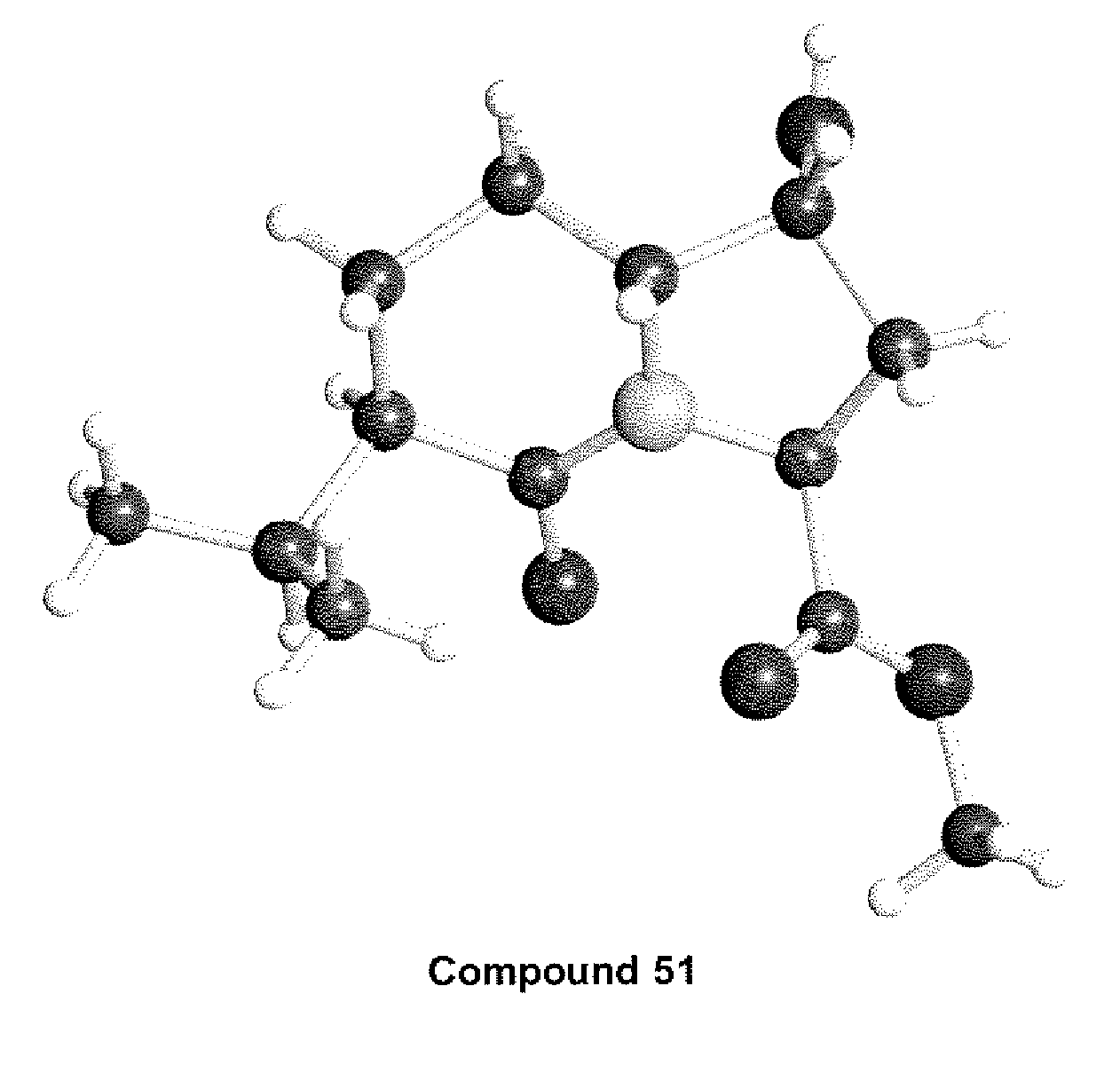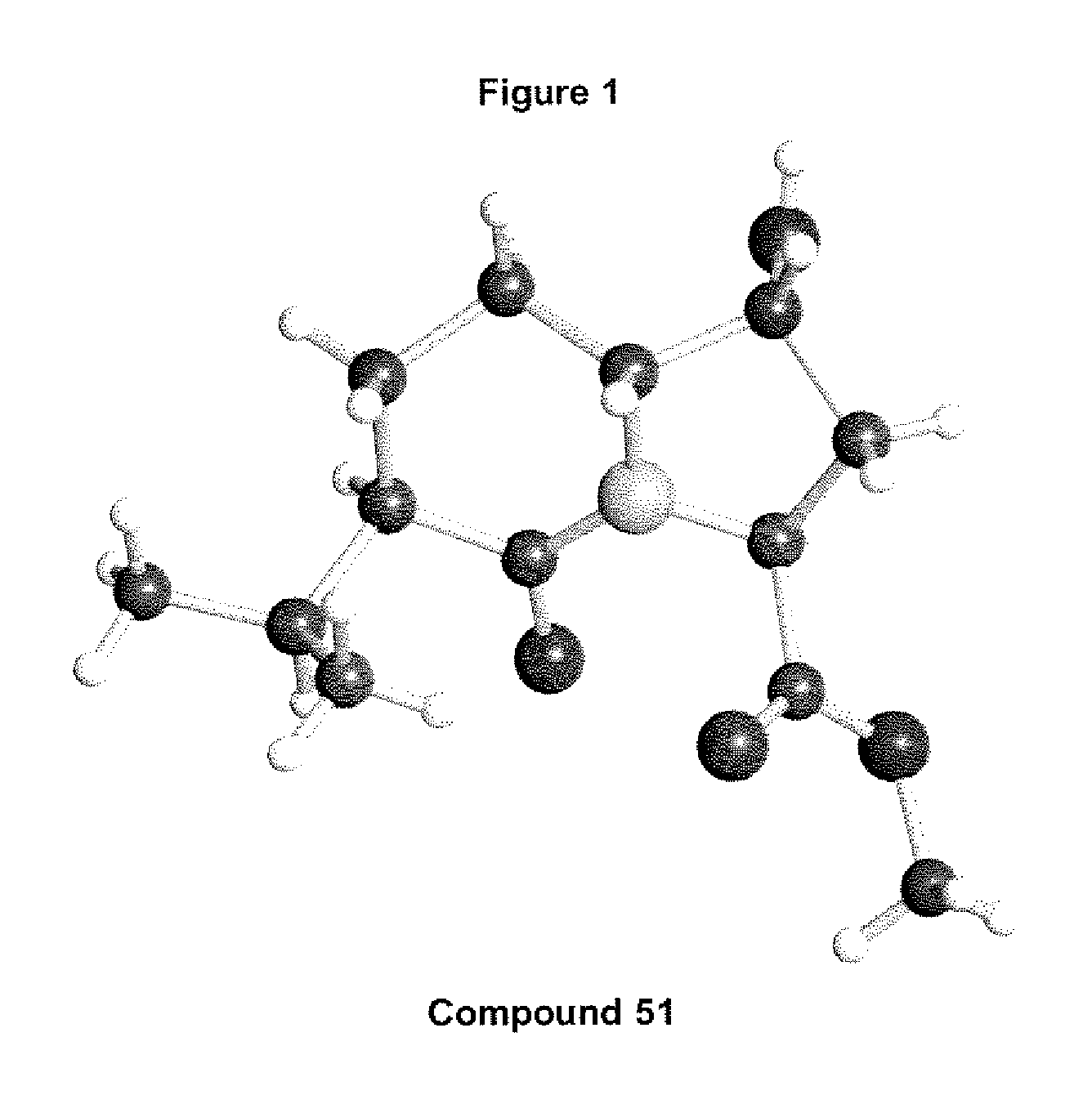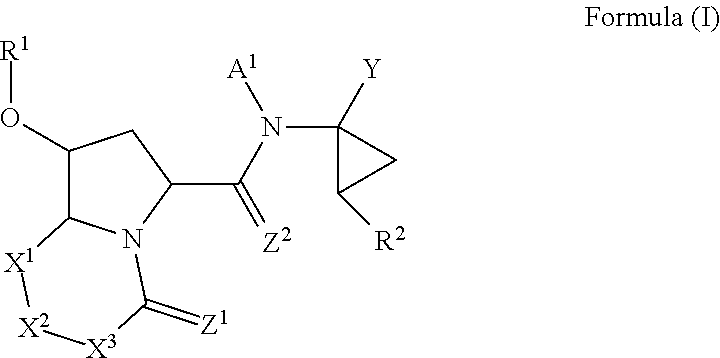Antiviral compounds
a technology of antiviral compounds and compounds, which is applied in the field of compounds with hcv inhibitory activity, can solve the problems of blood contamination with hcv, achieve the effects of improving oral bioavailability, enhancing activity against development, and improving inhibitory or pharmacokinetic properties
- Summary
- Abstract
- Description
- Claims
- Application Information
AI Technical Summary
Benefits of technology
Problems solved by technology
Method used
Image
Examples
preparation of example 1
Method A
[0236]
[0237]2R-Amino-3,3-dimethyl-butyric acid (5.02 g, 37.2 mmol) was added to a solution of DCM (25 mL) and dioxane (25 mL) in a glass pressure tube and cooled to −30° C. in a dry ice acetone bath. con H2SO4 (2.75 mL, 41.98 mmol) was added to the solution. Isobutene (25 mL) was condensed in a dry ice bath and added to the solution. The reaction mixture was warmed to rt over 1 h, then heated to 40° C. for 2 days. Reaction was cooled to −30° C. and the vessel was opened. Adjust the solution to pH=10 with 2N NaOH. The mixture was partition between Et2O and H2O. The aqueous layer was washed with Et2O three times, and the combined organic layers were extracted with brine and dried over Na2SO4. The drying agent was removed by vacuum filtration and 2R-amino-3,3-dimethyl-butyric acid tert-butyl ester (5.12 g, 72%) was isolated by the evaporation of solvent under reduced pressure to afford a colorless oil.
[0238]LC / MS=188 (M++1)
[0239]Compound 1 (20.35 g, 44.24 mmol) (Heterocycles Vo...
preparation of example 2
[0262]
[0263]Example 2 was prepared in a manner similar to method A, except, 4,8-dichloro-2-(2-isopropyl-thiazol-4-yl)-7-methoxy-quinoline was used in place of 4,8-dichloro-2-(6-isopropyl-pyridin-2-yl)-7-(2-methoxy-ethoxy)-quinoline, and the HCl salt of cyclopropanesulfonic acid ((1R,2S)-1-amino-2-vinyl-cyclopropanecarbonyl)-amide was used in place of the HCl salt of 1-methyl-cyclopropanesulfonic acid ((1R,2S)-1-amino-2-vinyl-cyclopropanecarbonyl)-amide.
[0264]LC / MS=885 (M++1)
[0265]1H NMR (400 MHz, D6-DMSO): δ (ppm) 10.603 (s, 1H); 9.045 (s, 1H); 8.345 (s, 1H); 7.817 (brs, 1H); 7.664 (brs, 1H); 7.416 (brs, 1H); 5.579 (m, 2H); 5.206 (d, J=17.21 Hz, 1H); 5.067 (d, J=11.74 Hz, 1H); 4.475 (m, 1H); 4.285 (m, 2H); 3.966 (s, 3H); 3.650 (m, 1H); 3.380 (quint, J=7.04 Hz, 1H); 2.887 (m, 1H); 2.466 (m, 1H); 2.250-2.095 (m, 2H); 1.683 (m, 1H); 1.399-0.982 (m, 30H).
preparation of example 3
[0266]
[0267]Example 2 (150 mg, 0.149 mmol) was dissolved in CH2Cl2 (2.0 mL) and 4.0N HCl in dioxane (2.0 mL) was added. The mixture was stirred at rt for 1 h. Solvent was removed under reduced pressure. The material was taken up in CH3OH. Example 3 (74 mg, 55%) was isolated by reverse phase HPLC as the TEA salt.
[0268]LC / MS=785 (M++1)
[0269]1H NMR (400 MHz, D6-DMSO): δ (ppm) 10.509 (s, 1H); 10.199 (brs, 1H); 8.929 (brs, 1H); 8.732 (s, 1H); 8.346 (s, 1H); 8.191 (d, J=9.19 Hz, 1H); 7.648 (s, 1H); 7.457 (d, J=9.19 Hz, 1H); 5.675 (brs, 1H); 5.523 (m, 1H); 5.171 (d, J=16.83 Hz, 1H); 5.054 (d, J=10.17 Hz, 1H); 4.443 (m, 1H); 4.415 m, 1H); 4.18 (s, 3H); 3.949 (brs, 1H) 3.786 m, 1H); 3.521 (m, 1H); 3.398 (quint, J=6.85 Hz, 1H); 2.880 (m, 1H); 2.594 (dd, J=7.04, 6.85 Hz, 1H); 2.239 (m, 1H); 2.089 (q, J=8.61 Hz, 1H); 1.678 (m, 1H); 1.405 (d, J=5.68 Hz, 6H); 1.272 (dd, J=5.08, 3.91 Hz, 1H); 1.130 (s, 9H); 1.046 (m, 2H); 0.997 (m, 1H).
PUM
| Property | Measurement | Unit |
|---|---|---|
| weight:weight | aaaaa | aaaaa |
| particle sizes | aaaaa | aaaaa |
| particle sizes | aaaaa | aaaaa |
Abstract
Description
Claims
Application Information
 Login to View More
Login to View More - R&D
- Intellectual Property
- Life Sciences
- Materials
- Tech Scout
- Unparalleled Data Quality
- Higher Quality Content
- 60% Fewer Hallucinations
Browse by: Latest US Patents, China's latest patents, Technical Efficacy Thesaurus, Application Domain, Technology Topic, Popular Technical Reports.
© 2025 PatSnap. All rights reserved.Legal|Privacy policy|Modern Slavery Act Transparency Statement|Sitemap|About US| Contact US: help@patsnap.com



